“Split leaf philodendron vs Monstera deliciosa” – these are two plants often lumped together under the ‘Swiss Cheese plant’ descriptor, creating some confusion. Until recently, the synonyms for these plants were quite perplexing. Today, we aim to provide clarity on this topic.
In this article, we’ll compare the two plants and tell you a little more about each. We’ll include major differences, prominent traits, the pros and cons of each, and some alternative plants that you can go with if you decide that both plants are simply not a good fit.
Without further ado, let the match begin between the Split leaf philodendron vs. Monstera deliciosa!
Bottom Line Up Front
While they both have a ‘split leaf’ appearance, it’s ironic to note that the ‘split leaf’ philodendron is actually groove-leafed, while the Monsteras fenestrated leaves are the real ‘split’ ones, as they can individually seek out sunlight. Beyond this, Monsteras like a more acidic soil, compared to the Split leaf’s preference for a simple loamy and well-draining one and finally, the Monstera is smoother to the touch than the bumpy philodendron.
There’s more to it, of course, although those are the highlights – let’s move on and get a closer look at each and you can see what we mean!
Table of Contents
The Main Differences of Split leaf philodendron vs Monstera deliciosa
While the telltale-holes of the Monstera deliciosa, aka the ‘Swiss Cheese plant’, certainly help to differentiate it from the split leaf philodendron, there are many more reliable things that you can look for to help you differentiate between these two popular plants.
You’ll need them, too, as the nomenclature of these plants is certainly confusing.
Split leaf philodendrons have long been lumped into the ‘Swiss cheese plant’ category and the name is used interchangeably with Monstera deliciosas. The thing is, these days that has been corrected, so to make this comparison clear, we are giving you the differences between the split leaf philodendron (Thaumatophyllum bipinnatifidum) and the Swiss Cheese plant (Monstera Deliciosa).
Now that we’ve cleared that up, the main differences between Split-leaf philodendrons and Monstera deliciosa plants are as follows:
While both plants have a ‘split leaf’ appearance, only Monsteras are fenestrated – which is a term that refers to the holes in Monstera’s leaves and originates from the Latin fenestra for ‘small openings’ (while ‘fenster’ in German means windows!). Philodendrons look ‘split’, but actually have grooves in each leaf, rather than actual split-leaves.
Philodendrons have a different texture to the touch – they are bumpy, rather like alocasia leaves, while monsteras feel smooth.
Philodendron plants will grow in the direction of light, but their leaves don’t seek it out singly. By contrast, Monstera leaves always reach for the sun.
Philodendron leaves look quite similar to feathers, making them easy to differentiate from the heart-shaped leaves of the Monstera.
Split leaf philodendrons have a solid, thick root structure, designed to better hold the weight of the plant and its long leaves. Monstera deliciosa, however, likes to climb, and has an aerial root system that allows these plants to do so!
The leaf joints of the Philodendron tend to curve directly into the leaf, while Monstera will have much more pronounced arches in their joints, as the leaves have evolved to follow the sun.
Philodendrons like a loamy, well-draining soil, while Monsteras prefer a more acidic soil medium.
Key Features: Split-leaf philodendron (Thaumatophyllum bipinnatifidum)

Now that we’ve covered their main differences, let’s take a look at some of the key features of the Split-leaf philodendron in order to better identify this plant and help you to paint an accurate mental picture of its traits. The key features of the Split leaf philodendron (Thaumatophyllum bipinnatifidum) are as follows:
The split leaf philodendron has large, glossy leaves with a bumpy texture, which may measure up to 35 inches in length and feature pronounced grooves along their length.
The split leaf has an 11-inch inflorescence, which forms as a spadix and has a funnel-shaped flower.
Its leaves can be up to 3 feet long and 2 feet wide!
In the wild, split leaf philodendrons can grow to be as tall as 15 feet, although indoors they tend to range between 6 and 10 feet high with a 6 to 8 foot spread.
Prefers a loamy, well-draining soil medium, bright, indirect sunlight, and typically requires watering once a week.
Pros
The split leaf philodendron is easy to care for and a relatively fast grower.
Technically a broadleaf evergreen shrub, these plants are hardy and thus a good fit for beginners
Can be placed in a hanging basket and while it grows fairly quickly, you won’t need to do a lot of pruning.
The large leaves are quite aesthetically pleasing and the plant itself adds an instant tropical ambience to any room big enough to house it.
Cons
This plant is toxic to pets, so it should not be kept indoors if you have them.
Due to its large height and spread, this is a better fit as an outdoor plant unless you have a lot of room close to a southern-facing window
Key Features: Monstera (Monstera Deliciosa)
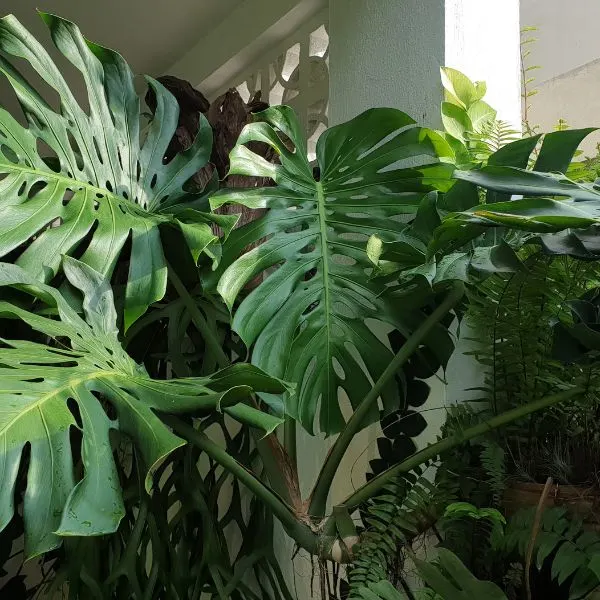
To help better define the Monstera deliciosa we’re going to audit some of their distinguishing features and list them below for you. Here are some of the key features of the Swiss Cheese plant, aka Monstera deliciosa:
Can grow to be 10 to 15 feet tall indoors, with a spread of approximately 8 feet wide, and with 18-inch leaves.
Monstera leaves are heart-shaped, with holes in them called fenestrations which widen to produce the split-leafed effect.
Monsteras can produce Mexican breadfruit, which tastes rather like a tropical fruit-cup (in most cases – see cons!)
Monstera deliciosa is a fast-grower, typically growing 1 to 2 feet every year.
Leaves are very smooth to the touch.
Prefers an acidic soil, pH 5.5 to 6.5, as well as bright, but indirect sunlight, and water once every 1 to 2 weeks when the soil is dry.
Monstera deliciosa sometimes ‘cry’, so seeing drops of water on the leaves that you didn’t put there is actually quite normal for these plants.
Pros
Nothing quite brings tropical aesthetics to your home like the Monstera deliciosa.
These plants grow fast, so it’s fun to watch them growing up and filling a space in your home or outside.
They tend to produce a lot of oxygen, enough so that you’ll notice the difference in air quality when you’re near them.
They are quite low maintenance as far as their watering needs.
Cons
Mexican breadfruit usually tastes amazing – except when it doesn’t. Sometimes breadfruit can cause burning in the throat.
These plants get very big and may not be a good fit for everyone, unless you have a lot of space to house it in.
This plant is toxic to pets, so you’ll want to keep it outside to keep your pets from chewing on it and potentially becoming very ill.
Other Alternatives plants you could choose (Pet friendly, we might add!)
Now that you know that both the split leaf philodendron and the monstera deliciosa are not only huge, but toxic to pets, we thought that we would devote a section to some alternatives you could go with that look amazing and which you won’t have to worry about your critters eating.
While they aren’t monsteras, each of these definitely adds a touch of the exotic wherever you choose to display them. With that said, let’s take a look at those alternatives!
Fatsia Japonica
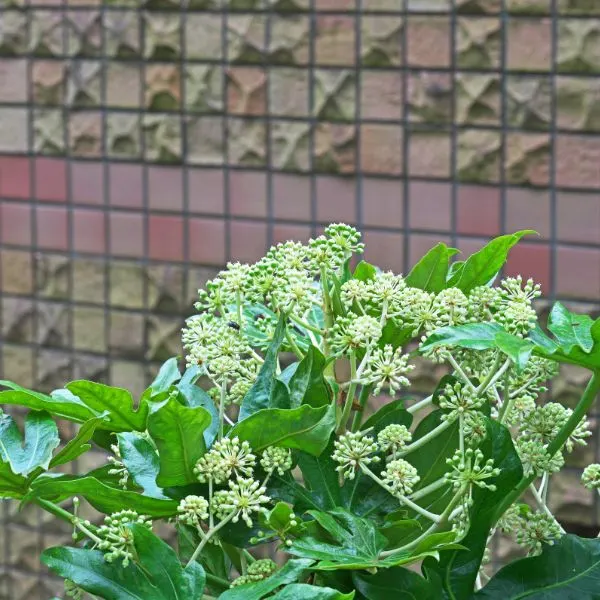
If you are looking for long, lush leaves, and don’t mind that they don’t have that distinctive monstera or philodendron split, then the Fatsia Japonica is a fine and pet-friendly alternative that you might go with.
Like the split leaf and monstera, Fatsias will grow to be large plants, but they will typically be anywhere from 6 to 10 feet tall and 6 to 10 feet wide – arguably a bit more manageable, although these plants may still be too big indoors for some.
Polka Dot plants
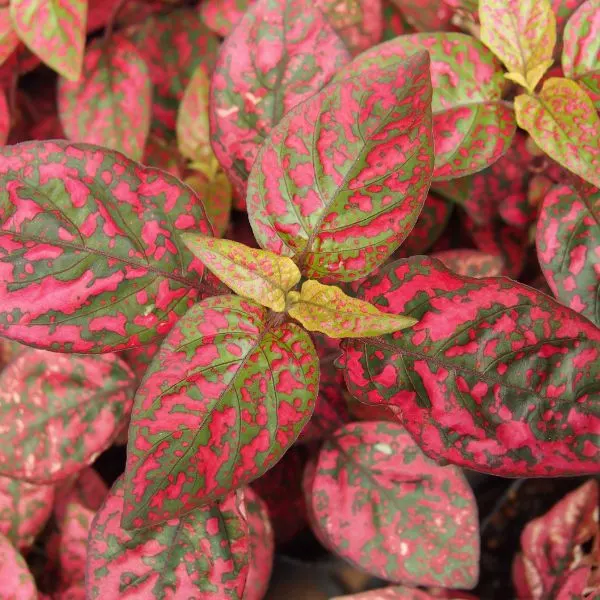
If space is at a premium but you want to add a little tropical color to your home or workspace, then we present the pet-friendly Polka Dot plant! Growing to be up to 30 inches tall and 30 inches wide, you can place them just about anywhere, and those pink, white, or red leaves look absolutely amazing!
Pygmy date palm
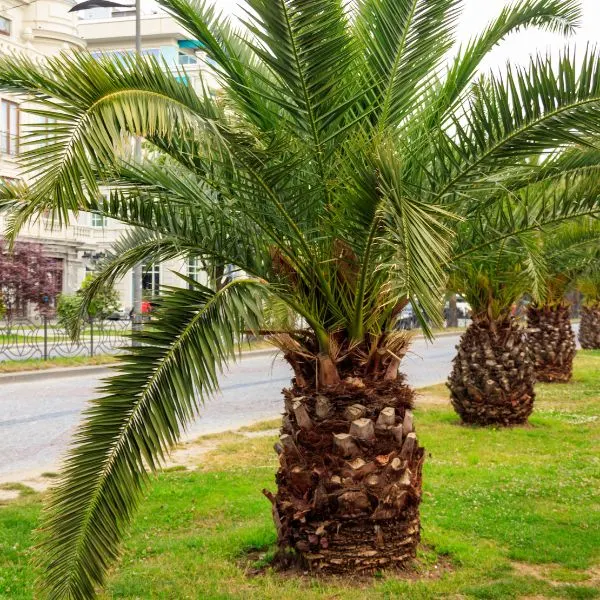
You want tropical? How about a pygmy date palm tree? These beautiful trees may be grown outdoors, where they will reach a height of 6 and a half feet tall and 5 to 6 feet wide, or you could grow them inside. Indoors, the growth is a little stunted, but only just – as they’ll tend to read 5 or 6 feet max.
While growing a palm tree indoors sounds a bit on the crazy side, these palms are actually very manageable, as they only grow about 6 inches every year. Definitely a conversation starter and a fine addition to your indoor garden to consider.
Lithops (Stone Plants)

Another space saver, Lithops are one of Nature’s wonders that are almost mind-blowing in their unique beauty. Sometimes referred to as ‘living rocks’ or ‘stone plants’, they are non-toxic for humans and animals alike, and also come in many colors.
You’ll want them by a southern facing window, as they need a lot of light, but otherwise they are pretty easy to care for and don’t need much space at all. Each plant measures anywhere from ½ to 1 ½ inches wide and about as tall and even if you have a lot of space, they make a worthy addition for their beauty and diversity alone.
Fire flashes
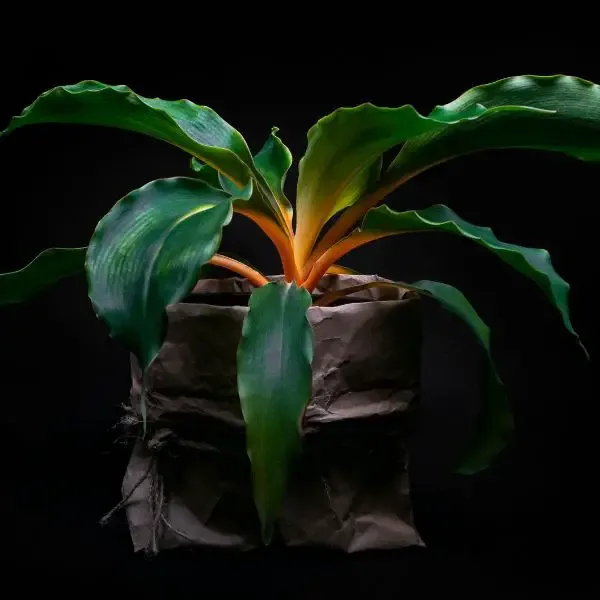
Also known as the ‘Orange Spider Plant’, Fire Flashes can grow to be as tall as 24 inches outside, or 12 inches indoors. They add a bit of zing to wherever you place them, as they have distinctive orange coloration at their bases which turn to pure green in the spreading leaves above.
It looks like a color explosion, so this is definitely an attention-getter that you’ll enjoy looking at day after day. They’re also easy to maintain, requiring only bright, indirect sunlight and a good full soak of water once a week!
FAQs
It’s a tradition in our articles to finish things off with a small collection of frequently asked questions. To that effect, we’ve picked 3 questions for the split leaf and another 3 for the monstera with the hopes that this will help to cover anything that we might have missed along the way!
How do I care for a split-leaf philodendron?
These are hardy plants and indoors, they may live as long as 20 years or a little over. In their native tropical environment, however, some can live as long as 100 years! Definitely what one might call robust.
How toxic is split leaf philodendron?
Split-leaf philodendrons are mildly toxic. Chewing them or otherwise ingesting them typically results in itchy inflammation when it penetrates the tissue of the mouth and can cause stomach pain if swallowed. While this would be uncomfortable for a human, it’s much more difficult for smaller pets, so if you have a split leaf and your pet has ingested some then it’s best to get them to the vet right away for treatment.
Is it safe to touch Monstera deliciosa?
You can certainly touch your Monstera, but it’s a good idea not to get in the habit of doing this a lot. While it probably won’t irritate your skin, it could, but the real problem is when you forget and then touch your mouth or your eyes. The stinging that can come from this will ensure that you don’t make this mistake twice, but it’s best to stay aware of this and avoid the problem altogether.
Why do Monstera deliciosa cry?
Sometimes referred to as ‘crying’ or ‘weeping’, guttation is a process where excess minerals and water are shed directly through the plant’s leaves. When you see this, your Monstera isn’t sad, but it IS getting a little too much water.
So, take note, and whenever you want to water your Monstera, put your index finger in the top 2 inches of the soil to check it first. If it’s dry, then you can water it, but if it’s moist then you’ll want to wait.
Why is Monstera not pet-friendly?
The problem is actually in the sap of these plants. Calcium oxalate crystals are present in it and they are rather like a collection of small toxic needles. Nature has put them there to protect the plant, so these needlelike-crystals can easily become embedded in tissue and result in a stinging sensation that makes animals think twice before trying to eat anything but the monstera’s yummy fruits.
In Conclusion
Now that we’ve had a closer look at both of these plants, it’s easy to see that they are quite different indeed. The Monstera truly fits the ‘Swiss Cheese plant’ description, as it develops holes and later actual split leaves that follow the sun to make the most of it. Philodendron leaves develop grooves, but the whole plant will move towards the sun, rather than the individual leaves.
While both grow to be very big and they are both toxic to pets, you’ll find some further differences in their textures and especially in their roots – Split leaf philodendrons tend to thicker, support roots, while Monsteras favor aerial ones for climbing.
We hope that you’ve enjoyed exploring their differences and hope that the pet-friendly list of alternatives will come in handy, should either of our primary topic plants prove not to be a good fit for what you have in mind.
Until next time, we wish you the very best with whichever of these plants that you choose – you really can’t go wrong adding a little touch of Nature to your home!
More plant stuff
